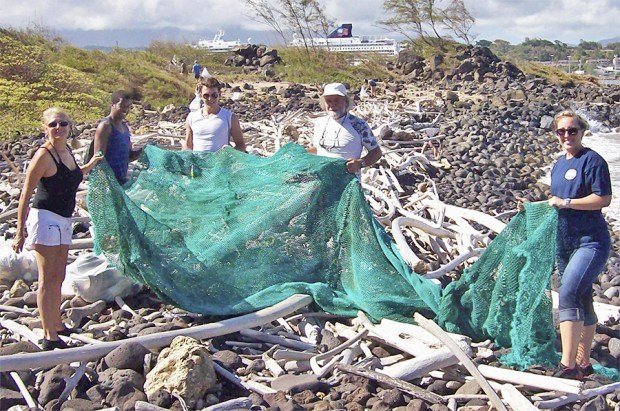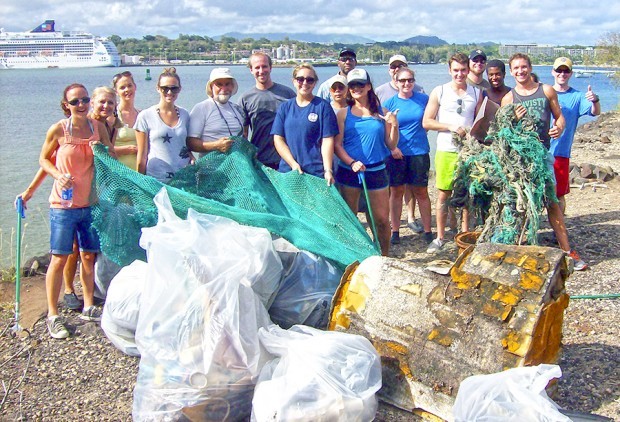Steve Soltysik has been busy scouring the shoreline on the windward side of Nawiliwili where the outside breakwater joins up with the land. Accessible by boat from Nawiliwili Harbor, Soltysik was joined by crew members of the Norwegian Cruise Lines’
Steve Soltysik has been busy scouring the shoreline on the windward side of Nawiliwili where the outside breakwater joins up with the land.
Accessible by boat from Nawiliwili Harbor, Soltysik was joined by crew members of the Norwegian Cruise Lines’ Pride of America last Thursday, the first day of the cruise ship’s regularly-scheduled overnight stay at Nawiliwili.
“The very enthusiastic and energetic crew members of the NCL Pride of America stepped up to give back to our island of Kaua‘i,” Soltysik said in an email. “This is the second time the crew and Capt. Evans Hoyt has helped clean up the marine debris, which come ashore here.”
Soltysik said the most recent clean up yielded two full boatloads of debris, the majority of the material arriving within the last six months.
“The Marine Debris Project is in partnership with the Bishop Museum and the Polynesian Voyaging Society,” Soltysik said. “The project also gets help from Dr. Hank Carson of the Oceanography Department at the University of Hawai‘i, Hilo.”
Due to its remote area and accessibility by boat, Soltysik said the objective is to collect marine debris and keep the remote beach clean so when any of the Japan tsunami debris reaches the shore, his task force can measure and document the material with the National Oceanic and Atmospheric Administration.
During a recent clean up, Soltysik said the volunteers found several containers of Japanese origin, but after checking with NOAA, said the containers, several designated as calligraphy ink and one, a fuel container, were not tsunami related.
On Mar. 11, 2011, a 9.0 earthquake and resulting tsunami struck Japan, claiming nearly 16,000 lives, injuring 6,000 people and destroying, or damaging countless buildings.
NOAA believes that as a result of this disaster, a portion of the debris which was generated by the tsunami will reach the United States and Canadian shores over the next several years, states the NOAA Japan Tsunami Marine Debris website.
NOAA is currently leading efforts with federal, state and local partners to collect data, assess the debris and reduce possible impacts to natural resources and coastal communities.
Visit www.marinedebris.noaa.gov/tsunamidebris/ for more information.
• Dennis Fujimoto, photographer and staff writer, can be reached at 245-3681 (ext. 253) or dfujimoto@ thegardenisland.com.



